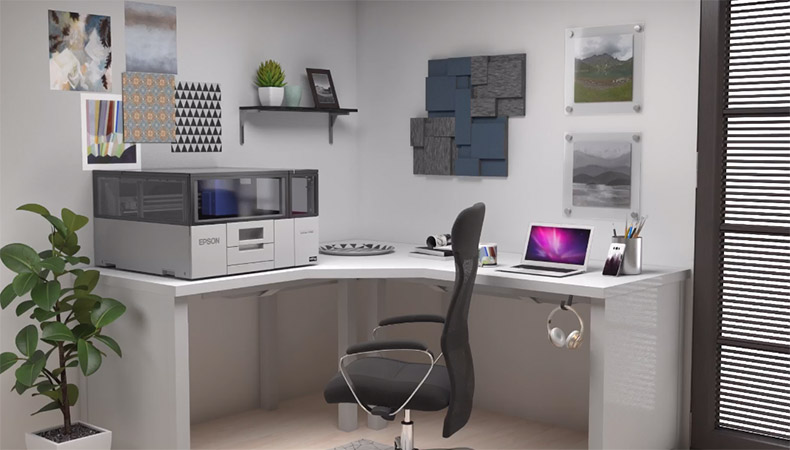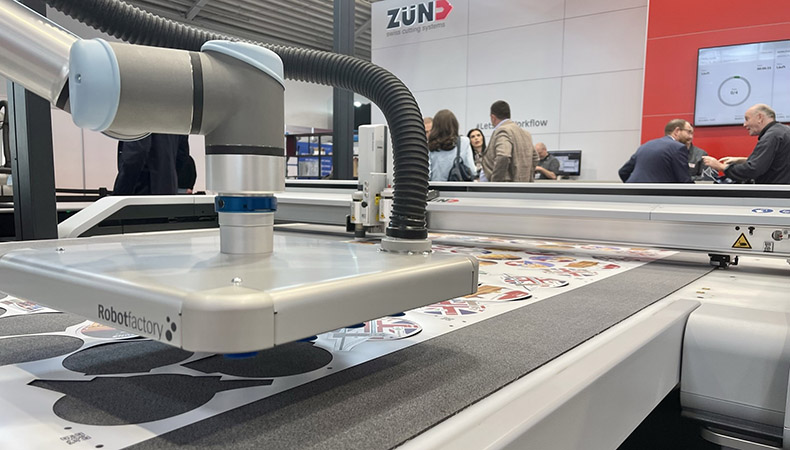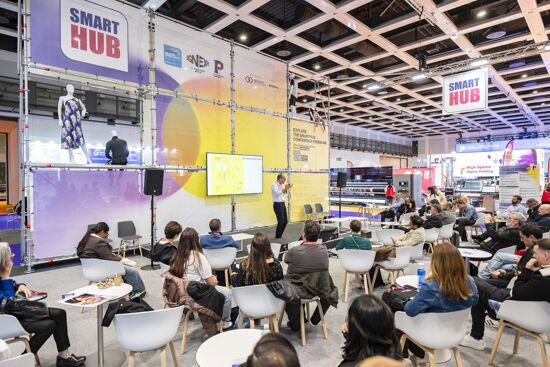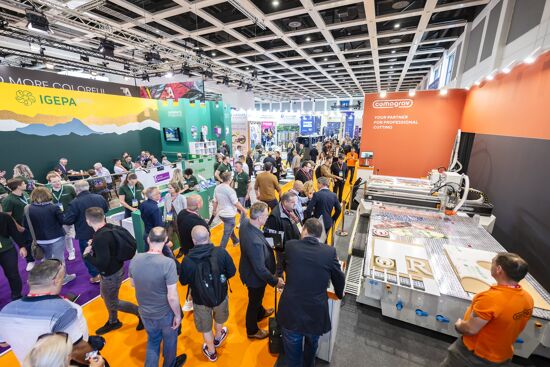How to increase the efficiency of Print & Cut workflows

Print & cut is the most common workflow in digital printing. That's why manufacturers prioritise the efforts to enhance the efficiency of new products. Sonja Angerer shares the latest technologies in print & cut.
Print & Cut workflows are very common for any printer, regardless of whether there is an elaborate software-supported process in place or if employees rely on written instructions. However, a majority of print & cut workflow can be improved and made more efficient. Here are some simple ways to achieve this:
- More efficient printing and cutting machines
- Process optimisation
- AI and robots
More Efficient Hardware for Print & Cut
When is hardware most efficient? This question is not as easy to answer. Hardware can be efficient in regards to energy , or a higher speed, such as the new Canon imagePROGRAF PRO-S series. Seven-colour printers were created specifically for high-end posters. The three models with the print widths of 24, 44 and 60 inches only need 48 seconds for a poster in A0 format.
Epson is taking a different approach with the Epson SureColor V1000. The UV flatbed printer in A4 format is under 700 x 700 mm so it can be placed in a small area. Due to its size this in turn saves space.
It is also equipped with an effective air filtration system. As a result, the printing area is entirely enclosed, so the machine does not need to be in a production room meaning the Epson SureColor V1000 (video) is particularly beneficial for small businesses that do not have much space. It enables direct printing on rigid media as well as on objects. Consequently, small batches, personalised and promotional gifts can be produced more efficiently using inkjet printing.
 CAPTION: The Epson SureColor V1000 UV flatbed printer with an A4-sized print bed easily fits on any desk. This saves both space and costs. Image credit: Epson.
CAPTION: The Epson SureColor V1000 UV flatbed printer with an A4-sized print bed easily fits on any desk. This saves both space and costs. Image credit: Epson.
Optimisation of processes
The continuous optimisation of processes can save a lot of time and money in print and cut workflows. A common option is to switch to direct printing rather than using stickers or foils transferred onto the desired object. With UV-curable ink, you can work directly on rigid board or promotional items, which eliminates several steps in the workflow.
Flatbed printers with UV-curable inks are also available in small formats, eg. Mimaki UJF-3042FX, the Roland DG VersaSTUDIO and VersaOBJECT lines, or the Mutoh XpertJet 461UF and 661UF.
When optimising processes, it is also useful to put the entire Print & Cut workflow to the test. For example, laser cutting instead of digital cutting can significantly accelerate the entire workflow, as there are no such steps as the seaming of synthetic fibres or polishing with cut Perspex. This can save a lot of time and money.
However, it is often relatively small factors that can make a print and cut workflow much more efficient. For example, Roland Connect has recently started offering integrated media management. After each print job, a barcode can be generated which describes the remaining length of the substrate on the roll. This is then automatically read back in the next job. As a result, substrates can be used more efficiently with the proportion of waste is reduced.
Ripping and cutting software is at the heart of every print and cut workflow. That's why small details like Ergosoft 17's "AnyFeed" feature can make such a difference. It allows you to create time-saving files for forward and backward cutting for plotters from Graphtec and Summa.
However, the winter 2023 update is only available to users with an active maintenance contract for the software. This has become standard practice in the industry. Therefore, printers should always have up-to-date software installed to make it easier to optimise the Print & Cut workflow.
 CAPTION: Robots such as the PortaTable 130 robot from Zünd partner Robotfactory make work in print and cut workflows much easier. Image credit: ZündRobots and AI for efficient workflows
CAPTION: Robots such as the PortaTable 130 robot from Zünd partner Robotfactory make work in print and cut workflows much easier. Image credit: ZündRobots and AI for efficient workflows
Robots and artificial intelligence (AI) have also found their way into the printing industry in recent years. AI is mainly used for design, the preparation of print data and in administration. In production, robots are becoming increasingly important.
For example, the cutting table specialist, Zünd, recently updated the ZCC Zünd Cut Center. Now it can also control robots that sort cut parts automatically. The Robot PortaTable 130 from Zünd's partner Robotfactory consists of a mobile unit and a robot arm to be used with various cutting tables.
Here's how: More efficient workflows
In order to set up an efficient print & cut workflow, printers have many different options. It doesn't always have to be about automation. However, without process control, i.e. the documentation of continuous improvement of work processes, limited improvements can be achieved. Therefore, it often logical and advantageous to secure the help of an experienced advisor when investing.
Interested in joining our community?
Enquire today about joining your local FESPA Association or FESPA Direct
Recent news

Industry Experts Explore the Evolution of Smart Manufacturing in the Textile Industry
A FESPA SmartHUB roundtable at Personalisation Experience 2025 discussed smart manufacturing's transformative impact on the textile industry. Experts highlighted the shift to on-demand customisation, driven by digital printing, data analytics, and automation. Key takeaways included enhanced machine control, significant waste reduction through intelligent software and colour management, and improved sustainability via energy efficiency and near-shoring, ensuring agility and environmental responsibility in textile production.

FESPA 2025 gathers leading visionaries from across the speciality print industry in Berlin
FESPA Global Print Expo 2025, European Sign Expo and Personalisation Experience (6 – 9 May 2025, Messe Berlin, Germany) welcomed Visionaries from across the speciality print industry to shape the future of print, develop forward-thinking business strategies, and explore innovative ways to translate emerging industry trends into tangible growth opportunities.

Exploring Cutting-Edge Textile Printing Innovation with Adobe Print Engine 7
Adobe PDF Print Engine 7, launched at FESPA Global Print 2025, significantly advances textile printing. Debbie McKeegan shares how it automates non-white substrate management and RGB colour handling, expands colour gamuts with in-RIP multicolour transparency blending, and streamlines workflows for efficiency and sustainability. This update boosts customisation, reduces waste, and positions businesses at the forefront of digital print innovation.

FESPA Global Print Expo 2025 - Overall Highlights
FESPA Global Print Expo, Europe's leading print and signage exhibition returned to Messe Berlin from 6 - 9 May 2025.